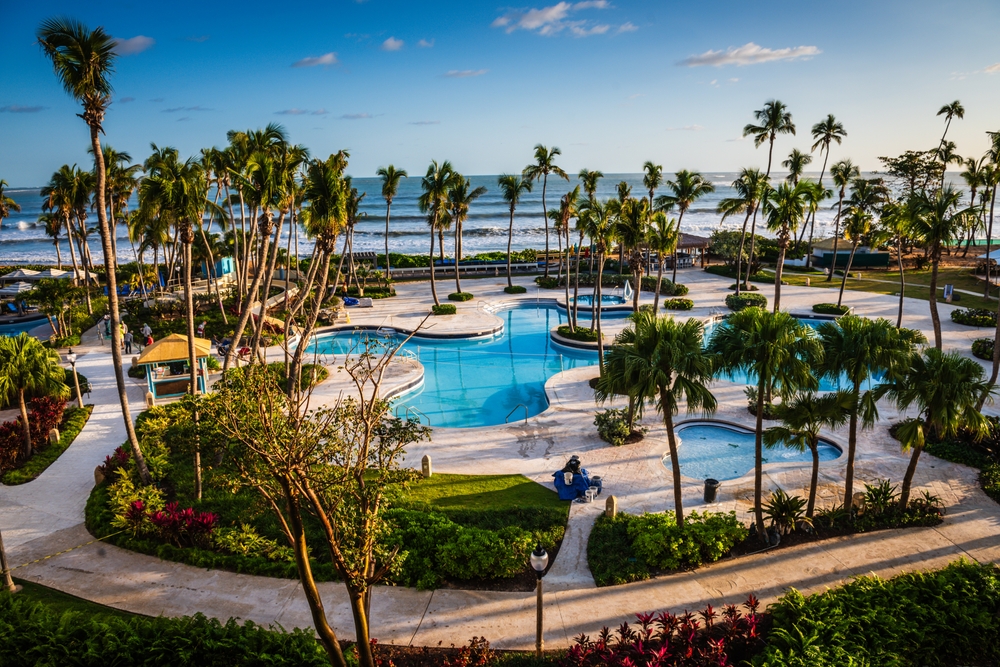Sri Lanka Trip Plan
Sri Lanka Trip Plan
Sri Lanka, an island nation in South Asia, offers travelers a mix of experiences. From lush landscapes and ancient ruins to vibrant cities and pristine beaches, there’s something for everyone. Planning a trip to Sri Lanka can be exciting given the diversity of activities and sights to see. Here’s a comprehensive trip plan to help you make the most of your visit.
Basic Information
Sri Lanka is located in the Indian Ocean, southeast of India. The capital city is Colombo, and the country has a population of around 21 million people. The currency is the Sri Lankan Rupee (LKR), and the official languages are Sinhala and Tamil. English is widely spoken too. The country experiences two monsoon seasons, so it’s crucial to plan your visit accordingly.
Visa Requirements
Most travelers will need a visa to enter Sri Lanka. The Electronic Travel Authorization (ETA) is the easiest option. This online application process typically grants a 30-day tourist visa. Make sure to complete the ETA application ahead of your trip.
Best Time to Visit
The ideal time to visit depends on which part of the country you are planning to explore. The southwest coast and hill country are best visited from December to March. The east coast and northern regions are optimal from May to September. Avoid the monsoon seasons for a more pleasant experience.
Itinerary Suggestion
Day 1-2: Arrival in Colombo
- Fly into Bandaranaike International Airport.
- Check into a hotel in Colombo.
- Explore the city landmarks like Gangaramaya Temple and the National Museum.
- Visit the bustling Pettah Market for local street food.
Day 3-4: Kandy
- Take a train or a car ride to Kandy, located in central Sri Lanka.
- Visit the Temple of the Sacred Tooth Relic, an important Buddhist site.
- Wander around the Royal Botanical Gardens.
- Attend a traditional Kandyan dance performance.
Day 5-6: Ella
- Hop on the scenic train ride from Kandy to Ella.
- Visit the Nine Arches Bridge, an architectural marvel.
- Climb Little Adam’s Peak for stunning views.
- Explore Ravana Falls, a picturesque waterfall.
Day 7-9: Yala National Park
- Travel south to Yala National Park for a safari adventure.
- Spot wildlife including elephants and leopards.
- Stay in nearby safari lodges or camps.
Day 10-11: Mirissa
- Head towards the southern coast to reach Mirissa.
- Relax on the beach or try surfing.
- Book a whale watching tour.
- Enjoy seafood at local beachside cafes.
Day 12-13: Galle
- Drive to Galle known for its Dutch colonial architecture.
- Walk along the ramparts of Galle Fort.
- Visit the Galle Lighthouse and Maritime Museum.
- Enjoy some shopping and dining in the old town area.
Day 14: Return to Colombo
- Travel back to Colombo for last-minute shopping and sightseeing.
- Visit the Independence Square and Viharamahadevi Park.
- Head to the airport for your departure flight.
Travel Tips
Sri Lanka is a relatively small country, making travel between locations fairly straightforward. Local trains and buses, while slower, offer an authentic travel experience. Hiring a driver or renting a car provides flexibility but be cautious of local driving conditions.
When packing, lightweight clothing is advisable due to the tropical climate. For temple visits, bring modest attire that covers shoulders and knees. Comfortable walking shoes are essential for exploring ruins and trekking.
Always carry enough water to stay hydrated, as the weather can be hot and humid. Sunscreen and insect repellent are also must-haves. Local sim cards are available for mobile connectivity, and Wi-Fi is often available in accommodations and cafes.
Eating out is a delightful experience in Sri Lanka. Don’t miss out on trying local dishes such as rice and curry, hoppers, and kottu roti. Street food is generally safe to eat, but exercise caution by choosing vendors with good hygiene practices.
Places of Interest
Anuradhapura
This ancient city, a UNESCO World Heritage site, offers a glimpse into Sri Lanka’s rich history. Explore sacred Bodhi trees, dagobas (stupas), and other archaeological wonders.
Sigiriya
Known as Lion Rock, this massive rock fortress is another UNESCO World Heritage site. Climb to the top to enjoy panoramic views and explore the ancient palace ruins.
Polonnaruwa
Yet another ancient city filled with well-preserved ruins, Polonnaruwa’s archaeological park features stupas, statues, and palace remnants.
Jaffna
Located in the northern part of Sri Lanka, Jaffna is rich in Tamil culture. Discover colonial-era buildings, vibrant Hindu temples, and beautiful coastal landscapes.
Negombo
Close to the main airport, Negombo offers relaxing beach vibes as well as a famous fish market. It’s an excellent starting or ending point for your trip.
Activities
Surfing
Beaches like Arugam Bay and Hikkaduwa are popular spots for surfing enthusiasts. Whether you’re a beginner or experienced surfer, these locations offer great waves and training schools.
Trekking
Sri Lanka’s diverse landscapes make it ideal for trekking. Trails in Horton Plains National Park, Knuckles Mountain Range, and Sinharaja Forest Reserve are top recommendations.
Tea Plantation Tours
The hill country, particularly around Nuwara Eliya and Ella, is famous for its tea plantations. Take a guided tour to learn about tea production and enjoy some fresh brews.
Ayurveda Spa Treatments
Sri Lanka has a long tradition of Ayurveda medicine. Many resorts and spas offer treatments ranging from massages to full wellness retreats.
Accommodation
From luxury resorts to budget hostels, Sri Lanka offers a range of accommodations. Popular picks include beachfront resorts in Mirissa, eco-lodges in Ella, and boutique hotels in Galle. For a unique experience, consider staying in a colonial bungalow or a tea estate house.
Local Customs and Etiquette
Respect for local customs is crucial. Dress modestly when visiting religious sites. Remove your shoes and hats before entering temples. Use your right hand for eating and handling money as the left hand is considered impure. Tipping is not mandatory but appreciated for good service.
Health and Safety
Sri Lanka is generally safe for tourists. However, take precautions like avoiding isolated areas at night. Keep an eye on your belongings in crowded places. Tap water is not potable; stick to bottled water. Make sure to have travel insurance to cover any medical emergencies.
Consult your doctor regarding vaccinations before traveling. Common recommendations include Hepatitis A, Typhoid, and Tetanus. Carry a basic first-aid kit for minor injuries and ailments.
Transportation
Trains are a scenic and economical way to travel, especially the routes between Kandy, Ella, and the hill country. Buses cover extensive routes but can be crowded. Tuk-tuks are convenient for short distances within cities. If you prefer more comfort, hire a private car and driver for your trip.
Currency and Payments
The Sri Lankan Rupee (LKR) is the local currency. ATMs are widely available in cities and towns, but it’s wise to carry some cash for rural areas. Credit cards are accepted in most hotels, restaurants, and shops. Be cautious when using ATMs and minimize carrying large amounts of cash.
Communication
English is commonly spoken, especially in tourist areas. Learning a few phrases in Sinhala or Tamil can be helpful and appreciated by locals. Mobile coverage is widespread, and buying a local sim card with data is affordable and easy. Most accommodations and cafes offer free Wi-Fi.
Responsible Travel
Travel responsibly by respecting wildlife and natural habitats. Avoid single-use plastic items. Support local businesses by buying souvenirs from local artisans and dining at family-run restaurants. Be mindful of cultural sensitivities and always ask for permission before taking photographs of people.
Festivals and Events
Sri Lanka is home to numerous vibrant festivals. The Sinhala and Tamil New Year in April, Vesak Festival in May, and the Kandy Esala Perahera in July or August are some annual highlights. Participating in these events offers a deep insight into local culture and traditions.
Wildlife Conservation
Sri Lanka boasts rich biodiversity. National parks like Yala, Udawalawe, and Minneriya focus on the conservation of elephants, leopards, and other wildlife. While visiting these parks, follow guidelines to ensure minimal impact on the environment.
Shopping
Local markets and bazaars offer unique items such as handloom textiles, gemstones, tea, and spices. Cities like Colombo, Kandy, and Galle have several shopping centers and boutique stores. Bargaining is common in local markets but done politely and respectfully.
Whether it’s exploring ancient cities or relaxing on the beach, Sri Lanka’s diversity guarantees a memorable experience. Plan wisely, respect the local culture, and enjoy the multifaceted beauty of this island nation.





